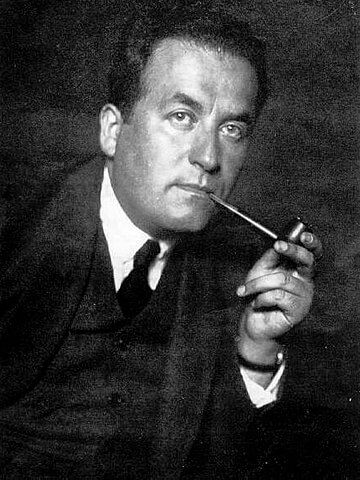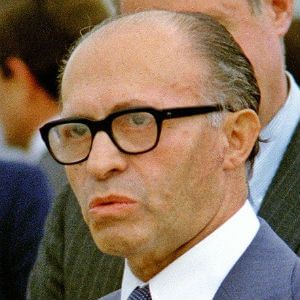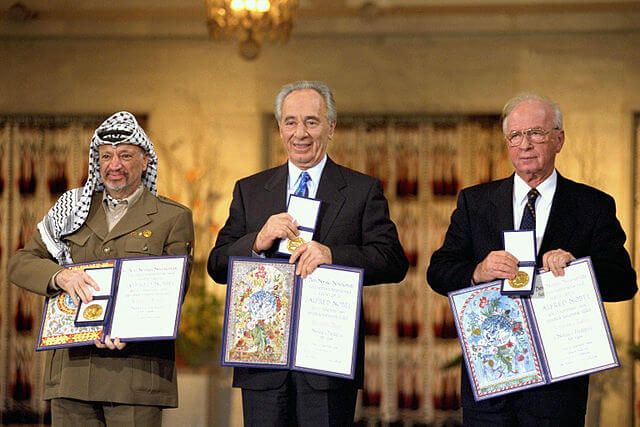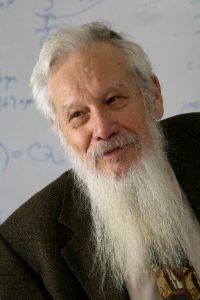For a country that has only existed for a little over 70 years, the Israeli contribution to the world has been dramatic. Perhaps the best way to measure just how great the country’s contribution has been is to look at the number of authors, statesmen, economists and scientists who constitute Israel’s Nobel Prize winners. Since 1966, twelve Israelis have won various Nobel Prizes. In the last ten years, four Israelis have won the award for Chemistry alone.
The diverse backgrounds of the winners and the research opportunities open to them have undoubtedly played a part in Israel’s ability to achieve such a high success rate. On the basis of population size, Israel has been more successful than the USA. Judged simply by the number of awards won, it beats many European countries including Spain, and even has more awards than China or India.
Join the fight for Israel’s fair coverage in the news

The first Israeli Nobel Prize was awarded for Literature in 1966 to the author Shmuel Yosef Agnon for his “profoundly characteristic narrative art with motifs from the life of the Jewish people.” The award was given when Israel was a mere 18 years old. Agnon was older at 76, and his life had spanned the pre and post-Holocaust eras allowing him insight into a world that by 1966 no longer existed. Agnon’s work, “The Bridal Canopy,” published in 1931, propelled him into the literary limelight. Agnon passed away in 1970. The archive of his works is held by the National Library in Jerusalem and his home turned into a museum.

Former Prime Minister Menachem Begin was awarded the Nobel Prize for Peace in 1978 along with Egyptian President Anwar Sadat for concluding a peace treaty between their two countries. The peace treaty has remained strong in a turbulent region ever since. Begin led two revolutions, the first as commander of the Irgun against the British and the second when he democratically toppled the left-wing coalition that had ruled Israel for the best part of the first two decades of its existence.
Related reading: The Israeli Prime Ministers: Who Were They?
The next Israeli Nobel was also given for Peace, in 1994 to Yitzhak Rabin and Shimon Peres for their negotiations with Yasser Arafat that culminated in the Oslo Peace Accords. These accords are now mired in controversy as they arguably led to the Second Intifada. Nevertheless the Israeli quest for peace is an honorable one that will continue so long as there is a partner to negotiate with.

In 2002, Daniel Kahneman was the first of Israel’s Nobel Prize winners in the field of Economic Sciences. A best-selling author, Kahneman changed the way economics was viewed by combining his understanding of human psychology with an exploration of human decision making when it came to human rationality. He is professor emeritus of psychology and public affairs at Princeton University’s Woodrow Wilson School.
Just two years later, two Israeli scientists were awarded a joint Nobel Prize in the field of Chemistry. Aaron Ciechanover and Avram Hershko contributed to the understanding of how cells respond to cancer. Their contribution to the field impacted on the way cancer is treated today. Ciechanover was born in Haifa and Hershko in Hungary, where he survived the Holocaust and together with his mother and father immigrated to Israel in 1950.

In 2005 Robert Aumann was awarded the Nobel Prize for Economics. The Nobel committee cited the awarding “for having enhanced our understanding of conflict and cooperation through game-theory analysis.” Aumann’s specific contribution is in the field of non-cooperative game theory. Born in Germany in 1930, Aumann’s family fled the country to the USA in the wake of the Kristallnacht pogrom. Aumann made aliyah (immigrated to Israel) in 1956 and worked at the Hebrew University until his retirement in 2000.
Israel is a Nobel powerhouse in the sciences. This was cemented by the award to Ada Yonath in 2009 for her work on how ribosomes are structured. Her work paved the way for a better understanding of the working of antibiotics and ensured that drugs could be better tailored to fight diseases. In addition to receiving the Nobel Prize for her research, Yonath has been awarded the Israel Prize and the Albert Einstein World Award of Science. She was born in Jerusalem and has spent much of her career at the Weitzman Institute where she gained her PhD.
Yet another Israeli won the award for Chemistry again in 2011, to Dan Shechtman for the discovery of quasicrystals. His journey was a bumpy one as his discovery went against the conventional wisdom (as did many of the scientists mentioned here) and he found himself in a battle against the leading scientists of the time, a battle he eventually won. The practical applications of Shechtman’s findings are for reinforced metal. As such, it has impacted on the construction of tougher surgical tools and can be found in products as diverse as diesel engines, LEDs and materials used to conduct electricity.
In 2013, two Israeli scientists were awarded the Nobel Prize for Chemistry; Michael Levitt and Arieh Warshal. These professors brought computer modelling into chemistry and used it to undertake multi-scale modelling for the development of complex chemical systems. Warshel served in the IDF as an officer in the Armored Corps and was honorably discharged with the rank of Captain. He fought in both the Six Day War and the Yom Kippur War. Levitt was born in South Africa, moved to the UK when he was 15 and eventually made aliyah to Israel in 1980. He now divides his time between Israel and the USA. He has also spent time working as an academic at the prestigious Cambridge University.
In the dynamic world of Israeli sciences, new developments are being brought forth all the time. It is with bated breath that we wait to see what contributions will come next in the scientific fields that change lives all around the globe. The vibrancy of the Israeli pioneering spirit and the democratic values underpinning the state mean this plucky little nation punches way above its weight and this seems set to continue when it comes to Israel’s Nobel Prize winners.
Featured image: via Wikimedia Commons and kisspng;

